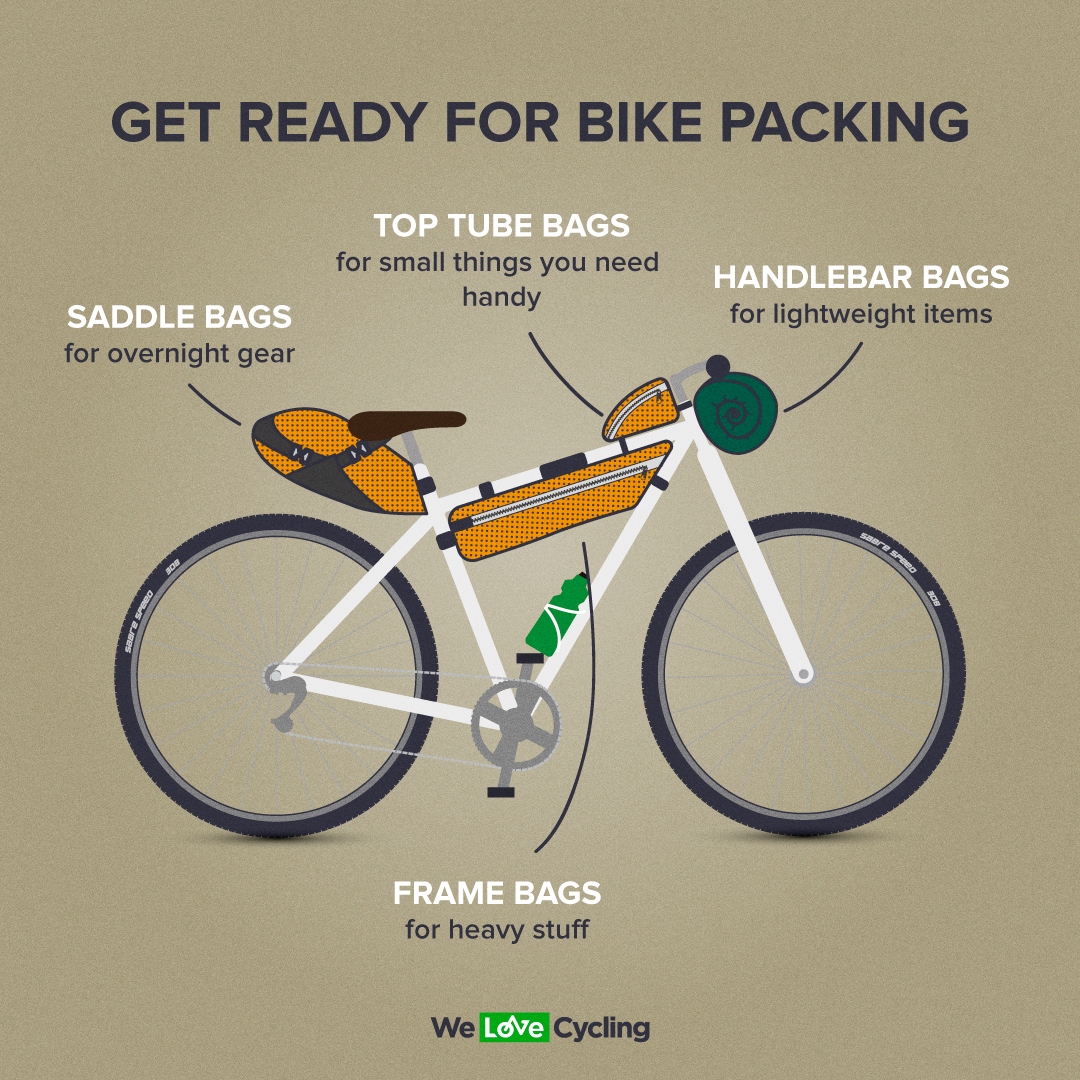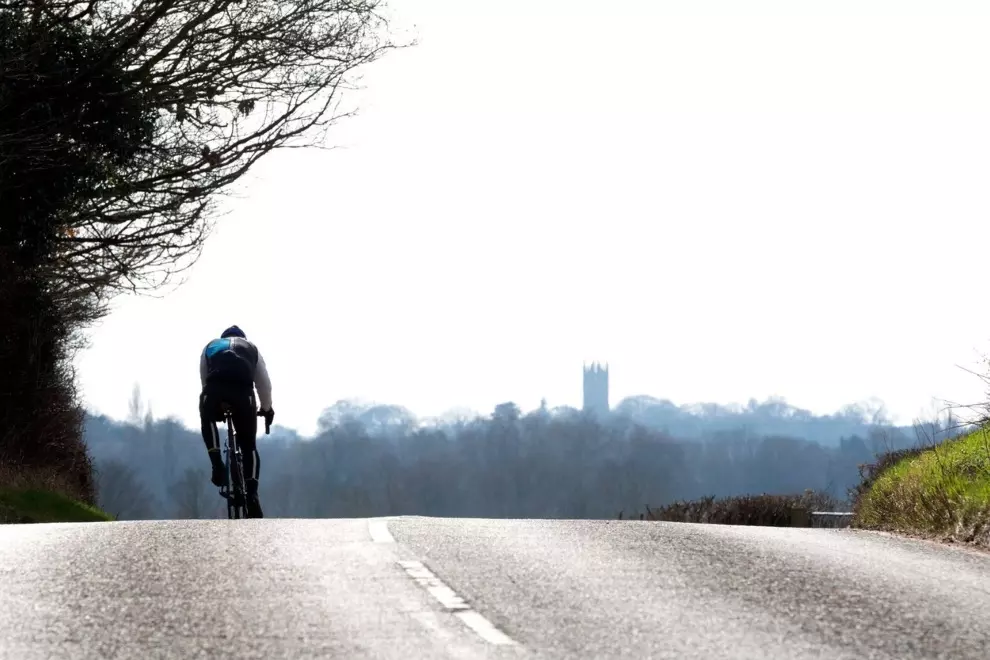You no longer need heavy racks and panniers to go for a weekend adventure on your bike. Bikepacking is all about easy, lightweight travel. All you need is your bike, be it a road bike, mountain bike, or fixie – any will work. Just strap on a few bags, fill them with essentials, make some simple adjustments, and you’re good to go.
Choose the right bike bags
All bikepacking bags have a few things in common. They are minimalist compared to a rack-and-pannier setup and they are usually waterproof and very durable. There are several types to choose from, each is best for a different type of load. You don’t need to have all of them, just enough to carry the essentials.
Saddle bags will usually carry your overnight gear because they are compressible. Frame bags are the best place for heavier items to maintain a low centre of gravity. Handlebar bags are best for lightweight items to prevent handling problems and top tube bags are great for things you need handy like food and tools as they are easily accessible.
https://www.instagram.com/p/BTlq9pqBqr4/
Adjust your suspension
Before you test your fully loaded bike on the trail, it’s advisable to add roughly 10 psi to the rear shock, 5 psi to the front, and up the compression damping slightly to keep the suspension feeling sharp under the increased weight. You might have to play around with it a bit.
Gear down
The heavier the load the more pushing you’ll do, unless you gear down. Even those hills you can usually breeze through will seem pretty tough with a fully loaded bike and a whole day of riding behind you. Don’t feel bad going down to a 24-tooth chainring, you’ll thank yourself later.
Ride Wide
For heavily loaded bikes, a wider tire footprint makes for a more stable ride, especially on rockier trails. You can experiment with tires from 6 cm to 7,5 cm wide for added comfort and bite.
Get ready for a weekend trip
You’ve got your bike adjusted and bags ready, now it’s time to choose the equipment. First, you’ll need stuff for sleeping – a tent, sleeping bag, and a mat. The smaller and lighter you can afford the better. Spare socks and a raincoat are also a must. Don’t forget hygiene essentials like toothbrush, tooth paste, towel, and a deodorant in case you want to socialize in the evenings. Good lights for the bike as you may be riding late, and a head lamp for the camp site are always a good idea. The usual spare inner tubes and tools are a no-brainer and a charger for your phone won’t go amiss either.
For a weekend trip, you’ll be fine without cooking equipment, especially if you have pubs and stores along the way. But for longer trips, a small portable stove is something to consider. When it comes to big adventures you can get inspired by people like Sean Conway, they do this for a living!






